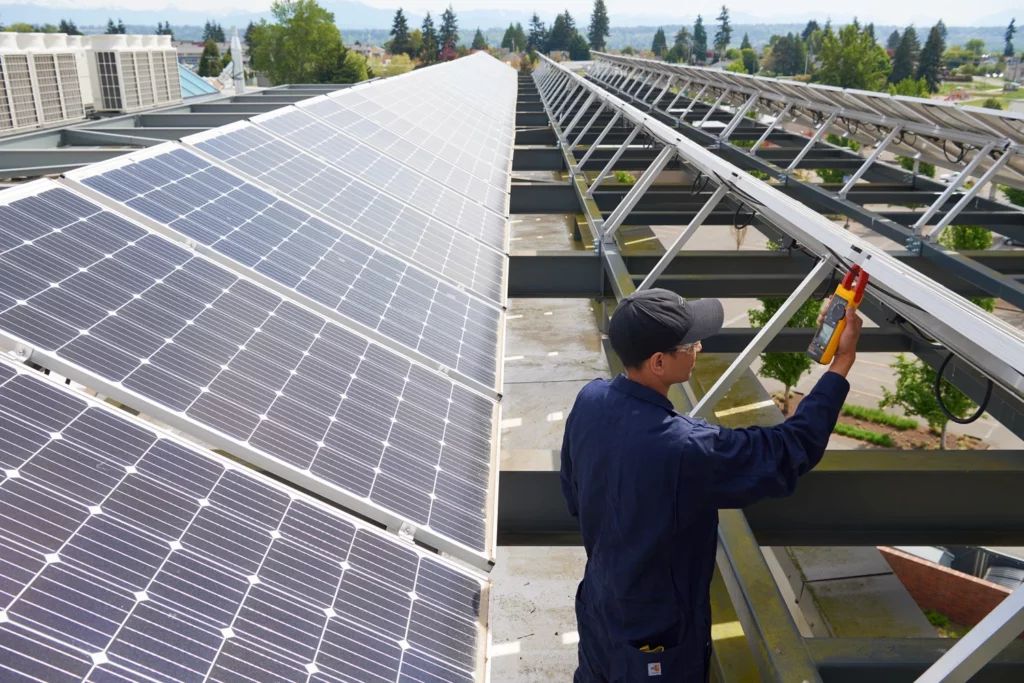Photovoltaic modules are the key components of photovoltaic power generation. To ensure the normal operation of photovoltaic power generation, the components of photovoltaic power plants need to be inspected and maintained.

Hidden quality problems in photovoltaic panels or problems that appear after a period of operation of the photovoltaic power plant are difficult to detect during site acceptance, as professional equipment must be used for photovoltaic module testing.
It includes three main types of problem detection methods for photovoltaic modules, causes of hot spot formation and photovoltaic module detection methods, causes of crack formation and photovoltaic module detection methods, power reduction classification and photovoltaic module detection methods.
1. Causes of hot spot formation and photovoltaic module detection methods
A photovoltaic module hot spot is a dark spot in the photovoltaic module that is exposed to the sun and prevents some of the solar cells from working, causing the closed part to heat up much more than the open part and burn with excessive heat.
The formation of hot spots in photovoltaic modules consists of two three factors: internal resistance and the solar cell’s own dark current.
A hot spot endurance test is a photovoltaic module test to determine the ability of photovoltaic modules to withstand the heating effect of a hot spot. Photovoltaic module tests are performed at the appropriate time and process to demonstrate that photovoltaic modules can be used for a long time under certain conditions.
Hot spot detection can be performed using an infrared thermal imager. This uses a visible thermal map to show the temperature and distribution of the measured target using thermal imaging technology.
2. Causes of hidden cracks and photovoltaic module detection methods
Hidden cracks mean the appearance of small cracks in solar cells, which accelerates the power decline of solar cells and affects the normal service life of solar panels.
At the same time, hidden cracks in solar cells can expand under mechanical loads and cause open circuit damage and hot spot effect.
The formation of hidden cracks is caused by a combination of multiple factors. Unbalanced stress in solar modules or severe shaking during transportation and reshipment can cause hidden cracks in solar cells.
Photovoltaic modules undergo EL imaging testing before leaving the factory, an EL detector is used. This device uses the principle of electroluminescence of crystalline silicon and takes a near-infrared image of the solar module using a high-resolution CCD camera and detects defects in the solar module.
The EL detector can detect hidden cracks, fragments, solder points, grid fractures and abnormal conditions of single solar cells with different conversion efficiency of photovoltaic modules.
3. Power reduction classification and photovoltaic module detection methods
Photovoltaic module power reduction is the phenomenon that the output power of solar modules gradually decreases as the illumination time increases. The phenomenon of photovoltaic module power reduction can generally be divided into three categories:
The first category is the power reduction of solar modules caused by destructive factors;
The second category is the initial photo-induced reduction in solar modules.
The third category is the aging and decline of solar modules.
Among these, the first category is a controllable reduction in the installation process of photovoltaic modules. For example, by strengthening the quality of degradation, transportation and installation of photovoltaic modules, it can reduce the likelihood of hidden cracks and fragmentation in solar cells.
The second and third category are urgent process issues that need to be addressed in the photovoltaic module manufacturing process. The photovoltaic module power reduction test can be completed through the photovoltaic module I-V characteristic curve tester.